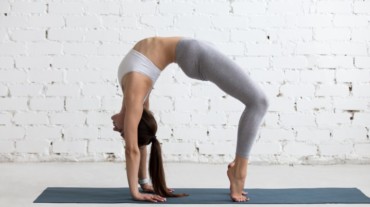
Tuberculosis, also known as TB, is considered to be a serious infectious disease that mainly affects the respiratory system and lungs. Caused by bacteria, this contagious disease can be easily spread from an affected individual to others while coughing, sneezing etc through tiny droplets that are released into the air. On this World Tuberculosis Day, let’s take a look at how we can combat this illness with the right set of yoga poses.
Before we get to that, it’s time to understand some of the most common symptoms associated with this disease!
There are 2 types of tuberculosis that can be classified as the following:
* Latent TB:
This is a type of TB infection, where the bacteria in your body is inactive and does not cause any symptoms. It’s also regarded in the medical circles as inactive TB or TB infection that isn’t contagious. However, this type of TB faces the risk of becoming active, therefore treatment is very important.

* Active TB:
This type of tuberculosis can make you extremely unwell and spreads more easily to other people, as compared to latent TB. This can happen even weeks or years after infection.
* Coughing for 3 or more weeks
* Coughing blood or mucus
* Chest pain, or pain, when breathing or coughing
* Drastic or unexpected weight loss
* Fatigue, and tiredness
* Fever
* Night sweats
* Chills
* Loss of appetite
Formation of the posture
* Start in the tadasana position.
* As you exhale begin to fold forward, bringing your fingertips or palms on the floor depending on your flexibility.
Also, read: World TB Day: How to differentiate between common cough and tuberculosis?
Formation of the posture
* Sit with both legs stretched out forward.
* As you inhale, begin to lift your arms up.
* While exhaling, start to bring your upper body on your lower body.
Formation of the posture
* Lie down completely on your backside, and fold both legs.
* Reverse your palms to place them under your ears or shoulders.
* With a deep inhalation, lift up your body forming the shape of an arch.
* If you can, straighten your arms. Keep the neck relaxed.

Formation of the posture
* Slowly get down on your knees, into a kneeling stance.
* Keep both heels close together, while placing your toes next to each other.
* Do not place the toes on top of the other.
* Put your palms on the knees or thighs. Straighten out the back.
Formation of the posture
* Slowly, bring your knees on to the ground into a kneeling stance and put your hands on the hips.
* Keep the feet and knees parallel and start to arch your back, pushing your pelvis forward.
* As you do this, slide your palms onto your feet.
* Try to keep the arms straight. Avoid any strain on your neck.

* Protect yourself from stress
* Practice pranayama, meditation or other mindfulness-based exercises to keep yourself calm and in a relaxed state of mind.
* Consume a balanced Sattvic diet and stick to home cooked meals
* Add whole grains and organic foods to your daily diet
* Take seasonal vegetables and fresh fruits in your daily diet
* Do not eat processed, refined and fast foods
* Avoid intake of alcohol and tobacco products
* It is important to note that tuberculosis can also affect many other areas of your body, including the kidneys, brain, or spine.